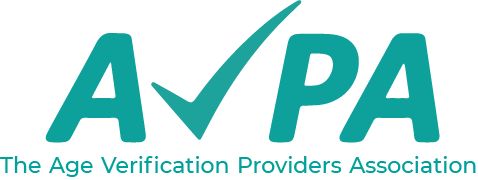The phrase “lies, damn lies and statistics” was, we learn from Wikipedia, most likely derived from the legal profession. According to an article in the journal, Nature, written in November 1885: “A well-known lawyer, now a judge, once grouped witnesses into three classes: simple liars, damned liars, and experts.” At some point, this was applied to statistics, perhaps by Disraeli and then quoted by Mark Twain. But this all took place long before the arrival of venture capitalists and business plans, as otherwise, it may have become “lies, damn lies and market size forecasts.”
But, in all seriousness, this is a question the Association has been asked about by a number of journalists and members, so we have applied ourselves to estimating the potential size of the market for online age verification services, but taken the most conservative view possible when forming the assumptions on which we base our calculations.
We have then socialised this amongst our membership to confirm it aligns with their own individual expectations, independently calculated, and been reassured that it does represent a central forecast within the range of projections our Member companies have formed.
Our model is based on the UK market, and then scaled up for the European Union and the OECD. We believe this is sensible because the UK has the most advanced regulatory requirements across the full range of age-restricted goods, services and content. It is already apparent that the EU is not far behind, and our forecast fundamentally assumes that this a model that will eventually expand across the OECD. But clearly, it may be several years before the OECD adopts the same level of regulation, in aggregate, as the UK.
The model accounts for a proportion of people varying by age to be offline entirely (Source: Ofcom)
We assume that those online visit the 13 top properties at least once a year (Google, Facebook, etc.) for just over half their time online, and then visit other new websites at an equivalent rate each week of the year.
Our revenue model only assumes a single payment for an age check is made once a year per age assured property or site but the commercial models of providers will vary considerably so this is a de minimus baseline.
An assumption which may not be immediately obvious is that 30% of sites will require age assurance of some sort. Visitors to this website who have studied the obligations the latest and forthcoming laws in the UK and Europe place on the majority of websites may understand our justification for this. But if you disagree, you can simply discount the figures below accordingly.
We have based our revenue projection only the average pricing discerned from published tariffs, not on any private information from members or other sources. As such, it does not necessarily account for volume discounts, which may be increasingly influential on the model as the market as a whole grows.
The AVPA’s estimate for the potential annual revenues from age verification services and our best estimate of the timeframe to reach these levels (in 2021 prices) are:
Age Verification Providers Association Consensus Forecast
Annual revenues from Age Verification services
Population (2019) |
Online Population |
Annual Revenues |
|
UK |
66,191,626 |
48,386,430 |
£496,504,855 |
Europe |
448,000,000 |
327,490,376 |
£3,360,457,940 |
OECD |
1,301,970,000 |
951,746,975 |
£9,766,105,858 |
Summary
UK |
£495m |
(within 3-5 years) |
EU |
£3.4bn |
(within 5-7 years) |
OECD |
£9.8bn |
(within 10-15 years) |
Notes
The OECD’s 37 members are: Austria, Australia, Belgium, Canada, Chile, Colombia, Czech Republic, Denmark, Estonia, Finland, France, Germany, Greece, Hungary, Iceland, Ireland, Israel, Italy, Japan, Korea, Latvia, Lithuania, Luxembourg, Mexico, the Netherlands, New Zealand, Norway, Poland, Portugal, Slovak Republic, Slovenia, Spain, Sweden, Switzerland, Turkey, the United Kingdom and the United States.
In September 2019, Comscore data showed there were 13 ‘properties’, or groups of websites and apps owned by the same company, accessed by UK adults that register average use each day on mobile, tablet or computer of a minute or more; 57% of average time spent online was on these 13 properties, while the remaining 43% of time spent online is across a long tail of properties (each made up of many websites (Source: ibid. Ofcom)
This estimate does not address the physical market for digital proof of age. We note a trend towards convergence of the online and offline market which may present a broader potential value for providers capable of offering rigorous, independent, standards-based age checks.
As a comparator, and sense check, we note that the US market for credit reference agencies is £10 billion per annum. (Source: IBISWorld)
